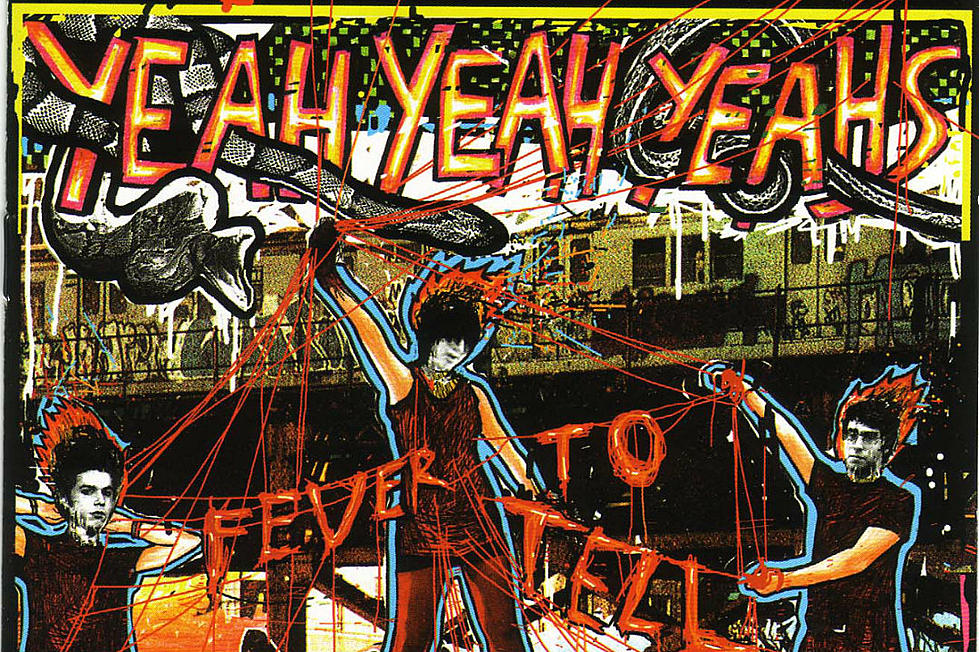
Cover Stories: The Offspring, ‘Americana’
So here we are, looking at that classic Ritual Device poster for a 1993 gig in Nebraska. No, wait, that's not right. We're checking out the cover of the 1996 book, Man's Ruin: The Posters and Art of Frank Kozik,aren't we? Wrong again.
To your left is the cover of the Offspring's 1998 multi-milllion selling album, Americana, and that Ritual Device poster and that book cover. Welcome to the wonderful world of Frank Kozik.
The art of Kozik is the art of the '90s alternative music scene. The artist made posters or album covers for more names than can reasonably be listed. His earliest known album cover is a 1986 sleeve for a band named Kamikaze Refrigerators, and his most recent is 2013's self-titled record by Hey! Hello! In between those two milestones, Kozik created somewhere between 150 and 200 sleeves.
As early as 1993, Kozik's work earned a three page spread in Rolling Stone, which featured some of his concert posters for Pearl Jam, Dinosaur Jr., Soundgarden and Beastie Boys. He even directed some music videos, like the clip for Soundgarden's "Pretty Noose."
In the mid-'90s, Kozik got a call from Nike to do an ad campaign. He took the money from that gig and started up Man's Ruin Records, which was just about as indie as an indie label can get. During their eight-year run, Man's Ruin released records by the Melvins, Kyuss and the Dwarves – and even a 7" version of the Sex Pistols' "Pretty Vacant." "We were the first guys to do the whole stoner, psychedelic rock thing, like Queens of the Stone Age and High on Fire," Kozik told Format Mag in 2009.
At the height of Man's Ruin, Kozik was a label head with 15 employees and he was still making art, including the sleeves for the bands on his label. That's a full plate and then some, so why take on a commission to do an album cover for a major label pop punk band? In January 2000, the artist explained to the A.V. Club:
Dexter [Holland, the singer] is an okay guy, and I know him from a long time ago. I was really hesitant about that. They really wanted me to do it, and I actually had a phone call with him. I go, "You understand that people are gonna give me s--t, so I've got to charge you, like, 75 grand to do this." And he was like, [grudgingly] "Okay." So, I figure, I'll take a few angry letters in return for 75K... He's just in love with that image, so it was kind of like, okay, old image, lot of money... I've really got to stick it to Columbia Records.
Kozik is 100% unapologetic about making money. "The more money I make, the happier I am and the weirder s--t I can do. Every time I get a big paycheck from a big corporation, I will turn it around and blow it on doing something I want to personally make. That way, everyone benefits," he told Jeremyriad in 2010. "One thing you have to understand about my work is that it’s not very romantic. What I do is not about me. It’s not an ego exercise or some driven vision. I don’t have to have a point. There are no crazy needs to be filled that get in the way of being successful. I will do one thing for a while as long as it seems to work. I transitioned from punk rock to grunge, from posters to a record label, to fine art."
Which brings us back to the poster that eventually became Americana's album cover. There is no point to the image, no reason that a little boy in a leg brace rides a swing with a sand flea; no reason that he should be so happy when some tentacled beastie lurks just out of frame. In fact, if one follows the boy's sight line, he seems to be happy because the cephalopod is there. Eight arms make for tireless swing pushing, after all.
That doesn't prevent folks from trying to find meaning, however. Jason Draper writes in A Brief History of Album Covers: "The Offspring may not have had the fuel to become serious commentators in the way that Green Day did, but their [Americana] sleeve at least touches upon much of what they tried to capture: an unnerving look at suburban American life in the mid-90s, through often awkward eyes."
Draper isn't necessarily wrong, regardless of whether Kozik intended any meaning with the image. There's certainly a sense of Americana here, the little boy rendered like an image from a '50s print ad, the leg brace implying the polio outbreak of the same era, the swing suggesting the innocence of childhood. The presence of monsters and their implicit normalcy in such a vignette says more about reality vs. idealism than perhaps the artist meant to, but it's there.
Kozik was forced to shut down Man's Ruin Records in 2002 after battling with distribution and lease problems. "By that time I was 40," he told Format Mag. "It’s like, you know, it’s time to get out of the music scene when you’re 40. That’s a young person’s gig."
This freed him up for a whole new career in vinyl toys – an area in which he has thrived for the last 15 years. His smoking rabbits, or Smorkin' Labbits as they are known, are ubiquitous, but he's designed literally hundreds of toys. He still does other commercial work, too, including another shoe for Nike a few years ago. His broad appeal and refusal to ghettoize his work as "fine art" makes it possible to pick up an authentic Kozik toy for under ten bucks or an original concert poster for thousands.
"The toys have been great," he told Jeremyriad. "Some day the toys will go away, and we’ll all find something else to do. I just want to be able to be a freelancer forever. I haven’t had a boss for 30 years. I want to die not having a boss. I don’t care if next year it turns out I design moccasins. If that’s what I do, that’s what I do."
The 25 Most Underrated Albums of the Past 25 Years
More From Diffuser.fm









